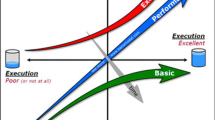Abstract
Product family design via component sharing is a widely practiced approach for offering sufficient variety to the market in an economical way. Most of the previous research has focused on the benefits of product family in the design and manufacturing stages—early stages of product family lifecycle. This chapter highlights another important aspect of product family design—the impact of component sharing on product end-of-life management—by a quantitative model for evaluating product family design from an end-of-life perspective. The model identifies an optimal strategy for managing product take-back and end-of-life recovery by use of mixed integer programming, thereby assessing the product family design in terms of its profitability in end-of-life management. A design study of a smartphone family is presented, and the results show that the model can assess profitability of a family design and highlight preferred family design alternatives at various degrees of component sharing.
The authors published the original version in Engineering Optimization Journal, Vol. 43, Issue 3, 2011 (DOI:10.1080/0305215X.2010.482990), which was modified for this book chapter.
Access this chapter
Tax calculation will be finalised at checkout
Purchases are for personal use only
Similar content being viewed by others
References
Alizon F, Shooter SB, Simpson TW (2009) Assessing and improving commonality and diversity within a product family. Res Eng Des 20(4):241–253
Bras B (2007) Design for remanufacturing processes. In: Kutz M (ed) Environmentally conscious mechanical design. Wiley, Hoboken, NJ, pp 283–318
Envirowise (2004) Sustainable design of electrical and electronic products to control costs and comply with legislation-GG427. Envirowise. http://www.envirowise.gov.uk. Accessed 30 Nov 2009
European Commission (2012) Council steps up collection and recycling targets for wasteelectrical and electronic equipment. http://ec.europa.eu/environment/waste/weee. Accessed 13 Jul 2012
Fellini R, Kokkolaras M, Papalambros P, Perez-Duarte A (2005) Platform selection under performance bounds in optimal design of product families. J Mech Des 127(4):524–535
Inderfurth K, Langella IM (2008) Planning disassembly for remanufacture-to-order systems. In: Gupta SM, Lambert AJD (eds) Environment conscious manufacturing. CRC, Boca Raton, FL, pp 387–411
Jacobsson N (2000) Emerging product strategies – selling services of remanufactured products. Licentiate Dissertation, Lund University
Jiao J, Simpson TW, Siddique Z (2007) Product family design and platform-based product development: a state-of-the-art review. J Intell Manuf 18(1):5–29
Krikke HR, van Harten A, Schuur PC (1998) On a medium term product recovery and disposal strategy for durable assembly products. Int J Prod Res 36(1):111–139
Kwak M, Kim H (2010) Evaluating end-of-life recovery profit by a simultaneous consideration of product design and recovery network design. J Mech Des 132(7):071001
Kwak M, Behdad S, Zhao Y, Kim H, Thurston D (2011) E-waste stream analysis and design implications. J Mech Des 133(10):101003
Mangun D, Thurston D (2002) Incorporating component reuse, remanufacture, and recycle into product portfolio design. IEEE Trans Eng Manag 49(4):479–490
Martin M, Ishii K (2002) Design for variety: developing standardized and modularized product platform architectures. Res Eng Des 13(4):213–235
Perera HS, Nagarur N, Tabucanon MT (1999) Component part standardization: a way to reduce the life-cycle costs of products. Int J Prod Econ 60–61:109–116
Rai R, Allada V (2003) Modular product family design: agent-based pareto-optimization and quality loss function-based post-optimal analysis. Int J Prod Res 41(17):4075–4098
Simpson TW (1998) A concept exploration method for product family design. Dissertation, Georgia Institute of Technology
Simpson TW (2004) Product platform design and customization: status and promise. Artif Intell Eng Des Anal Manuf 18(1):3–20
Simpson TW, D′Souza BS (2004) Assessing variable levels of platform commonality within a product family using a multiobjective genetic algorithm. Concur Eng 12(2):119–129
Simpson TW, Seepersad CC, Mistree F (2001) Balancing commonality and performance within concurrent design of multiple products in a product family. Concur Eng 9(3):175–190
Simpson TW, Siddique Z, Jiao J (2006) Platform-based product family development. In: Simpson T, Siddique Z, Jiao J (eds) Product platform and product family design. Springer, New York, NY, pp 1–15
Sodhi MS, Reimer B (2001) Models for recycling electronics end-of-life products. OR Specktrum 23(1):97–115
SquareTrade (2008) SquareTrade Research: iPhone more reliable than BlackBerry, One Year In. SquareTrade. http://www.squaretrade.com/pages/iphone-reliability-study-11-2008. Accessed 15 Nov 2009
SquareTrade (2009) SquareTrade Research: one-third of iPhones fail over 2 years, mostly from accidents. SquareTrade. http://www.squaretrade.com/pages/iphone-reliability-study-06-2009. Accessed 15 Nov 2009
Thevenot HJ, Simpson T (2006) Commonality indices for assessing product families. In: Simpson T, Siddique Z, Jiao J (eds) Product platform and product family design. Springer, New York, NY, pp 107–129
Acknowledgments
This material is based upon the work supported by the National Science Foundation under Award No. 0726934. Any opinions, findings, and conclusions or recommendations expressed in this publication are those of the authors and do not necessarily reflect the views of the National Science Foundation.
Author information
Authors and Affiliations
Corresponding author
Editor information
Editors and Affiliations
Rights and permissions
Copyright information
© 2014 Springer Science+Business Media New York
About this chapter
Cite this chapter
Kwak, M., Kim, H. (2014). Product Family Design and Recovery for Lifecycle. In: Simpson, T., Jiao, J., Siddique, Z., Hölttä-Otto, K. (eds) Advances in Product Family and Product Platform Design. Springer, New York, NY. https://doi.org/10.1007/978-1-4614-7937-6_28
Download citation
DOI: https://doi.org/10.1007/978-1-4614-7937-6_28
Published:
Publisher Name: Springer, New York, NY
Print ISBN: 978-1-4614-7936-9
Online ISBN: 978-1-4614-7937-6
eBook Packages: EngineeringEngineering (R0)




